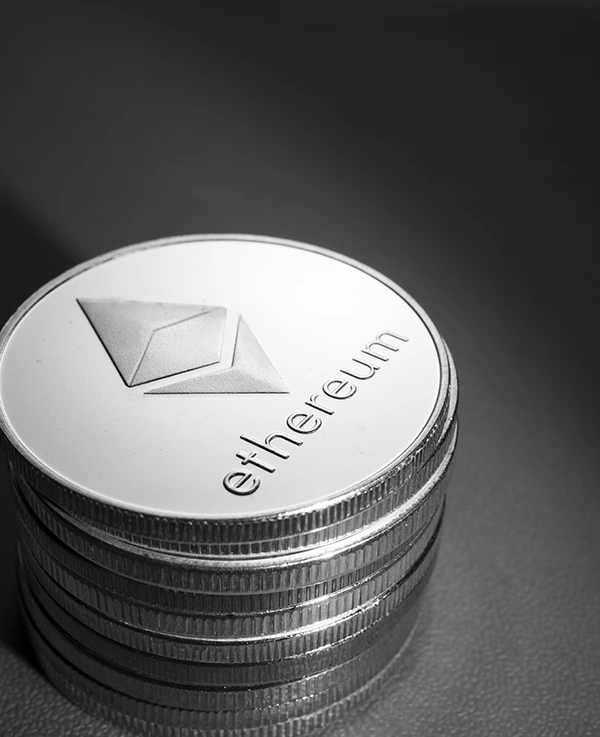Ethereum is the second-largest cryptocurrency by market capitalization, with a market value of over $450 billion in early 2025, according to CoinMarketCap. As interest from institutional investors remains strong and new innovations across the blockchain continue to emerge, ETH’s long-term trajectory will be a continued point of interest for investors.
The Road Ahead: Ethereum’s Long-Term Price Outlook examines all the variables that can affect ETH’s market performance going forward, from speculation surrounding ETF approval to the growth of DeFi, to some price surges witnessed recently.
In this article, we will dissect Ethereum’s price action right now and whether you should buy Ethereum or not. Analyze the positive effects of ETH spot ETF approvals on price, and review the next several upgrades that promise to increase network efficiency.
The price of ETH hit its ATH in November 2021 at \$4,891. In the following months, it dropped to around \$1,000, mirroring market trends. The introduction of the Paris upgrade, which switched the mining algorithm from Proof-of-Work (PoW) to Proof-of-Stake (PoS) took place in September 2022.
The transition to PoS made Ethereum more sustainable, since staking is less resource-intensive than PoW mining. After that upgrade, the price started to grow mildly but steadily. Throughout 2023, the price of ETH remained relatively stable, with slight monthly gains observed from month to month.
But in October 2023, it started to rise extremely quickly, along with other cryptos like BTC or SOL. On March 11th, 2024, ETH rose to $3,881. Two days later, the Dencun upgrade was implemented, which strengthens the network for layer-2 solutions.
Transactions on the secondary layer are typically quicker and come with a reduced transaction fee. Although it went down again around $2,600, the ETF rumors drove the price back up to $3,800. Ethereum conversions from fiat also became more accessible around this time, further supporting market activity.

For the past couple of years, Ethereum developers have been announcing and executing upgrades. The surge of dApps and DeFi protocols caused the network to overload and suffer from congestion. High fees and slow transmissions reduced its performance, and an array of alternatives were launched to “kill Ethereum.”
After the transition to PoS, which marked a major milestone, developers haven’t stopped implementing new technological advances. After the Dencun upgrade in March, developers are now focused on the Pectra upgrade. This project will also launch a series of EIPs (Ethereum Improvement Proposals).
In this case, EIP 3074 enables wallets to send batches of transactions. This way, users can process multiple payments at once. EIP 7251, also part of Pectra, will increase the limit for validator nodes. As of now, they can only stake up to 32 ETH, but this upgrade will raise the figure to 2,048 ETH.
The Ethereum Purge, announced by Vitalik Buterin a few months ago, will also be implemented soon. This set of upgrades will simplify the process of creating smart contracts and reduce the data stored on blocks. It will simplify dApp development for developers, and the network overall will be lighter and more efficient.
Ethereum has had a great performance in 2024, and there are factors in the market that could drive it higher. Besides the ETF rumors, which are likely to be real, a court ruling widely announced in May brought hopes to ETH investors. The indictment revealed that the U.S. Department of Justice considers Ethereum a private blockchain.

Another factor is, again, the transition from PoW to PoS. Unlike Bitcoin, Ethereum does not have a fixed maximum supply limit. This means that the blockchain will potentially create new coins forever, leading to price inflation. But The Merge introduced a coin burn protocol, reducing the circulating supply and switching to deflationary dynamics.
Bitcoin performance could have an impact on ETH as well, since BTC price is often mirrored by the rest of the market. In May, Bitcoin’s mining reward halved. This process, occurring every 4 years, typically drives the asset’s price higher in the months that follow.
Taking all these factors into consideration, market analysts predict ETH will be as high as $6,500 in 2026. After reaching a new ATH this year, it will likely hit the $10,000 mark by 2027.
While Bitcoin was the first cryptocurrency to launch, and is still the market leader, Ethereum’s features cannot be emphasized sufficiently. The revolution of world finances wouldn’t be possible without the chance to create DeFi protocols.
Exchanges where anyone, anywhere, could participate. Instant lending platforms now bypass credit scores entirely. Even art ownership can be tokenized and shared through NFTs. All these markets were improved and extended thanks to Ethereum’s smart contract features, even outside Ethereum itself.
Moreover, a flow of new investors in dApps built on Ethereum means new investments in ETH. So, as the network becomes more modular and secure with upgrades, new money will enter, and the coin will appreciate more. Although nothing is set in stone, and adverse accidents could drive the price down, the founding principles of Ethereum’s project are strong. So it will always have an intrinsic value.
